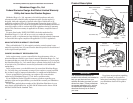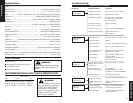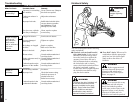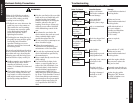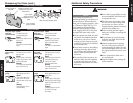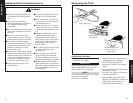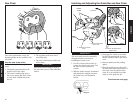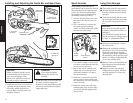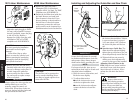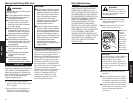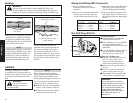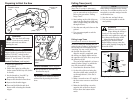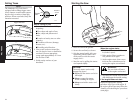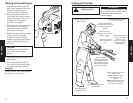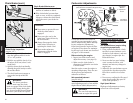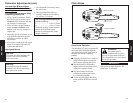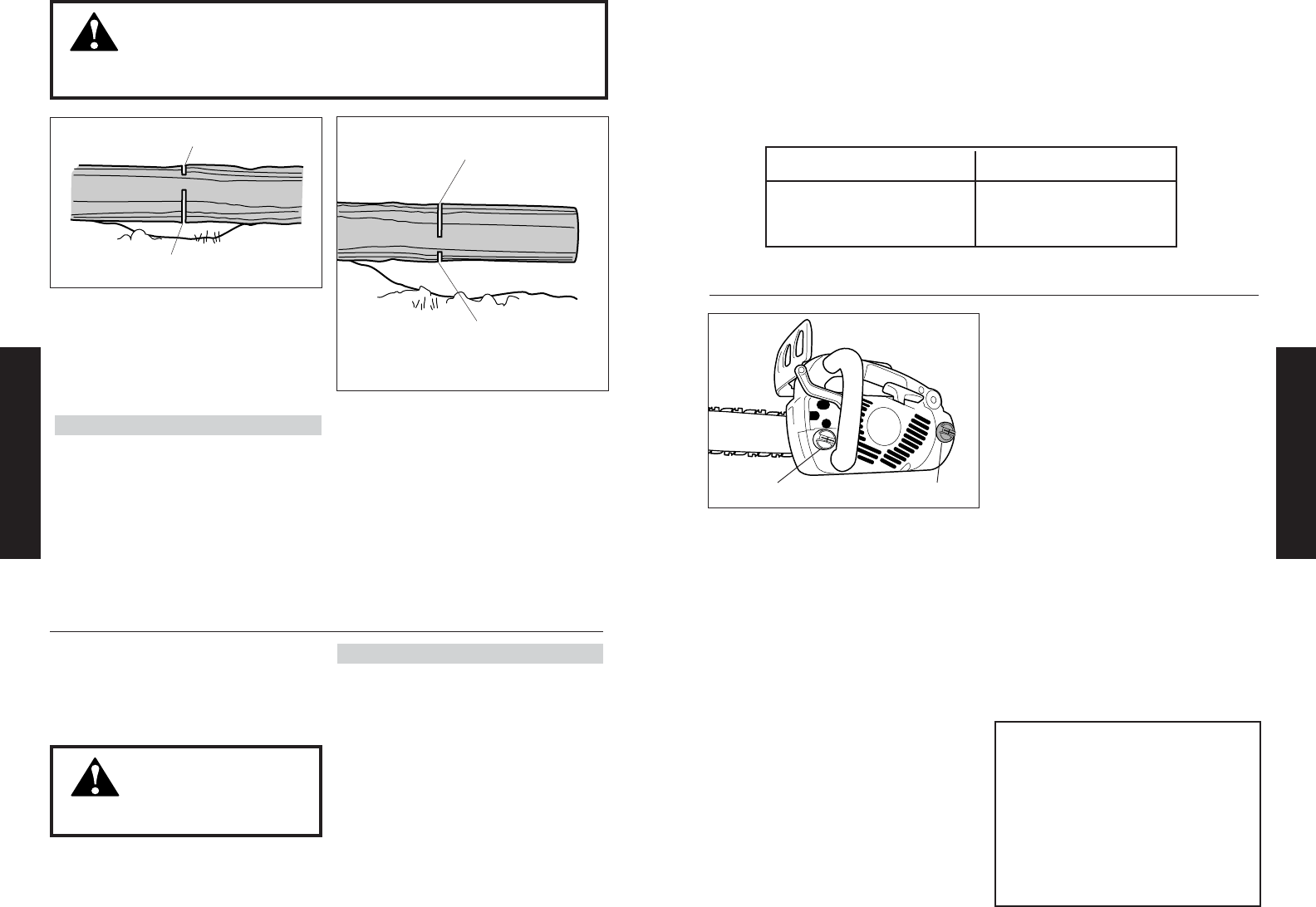
15
OPERATION
35711
Fuel Cap
Oil Cap
3. Refer to following chart for
examples of 50:1 fuel to oil mix
quantities.
4. Place the saw on a hard surface with
the fuel cap up and wipe any chips
or debris from around the fuel cap.
Oil Requirements
Ⅵ When available, use Shindaiwa
Premium bar & chain oil.
Ⅵ When Shindaiwa oil is not available,
use a premium 30-weight oil
specifically blended for bar & chain
lubrication.
Ⅵ For cold weather operation, bar oil
may be thinned by mixing with
clean kerosene at a ratio of 1:1.
Filling the Oil Reservoir
Ⅵ Filling the Oil Reservoir Place the
saw on its side (clutch cover
down), and wipe any chips or
debris from around the oil cap.
Ⅵ Remove the oil cap at the front of
the saw.
Ⅵ Fill the oil reservoir with bar &
chain oil, and replace the cap.
Ⅵ Wipe spilled oil from handles and
controls before starting the saw.
Bar Oil/Filling With Oil
CAUTION!
Proper lubrication is critical to
the performance and service life
of your saw's oil pump, guide
bar, and saw chain! Always use
a high quality lubricating oil
designed for saw chain lubrica-
tion! Never use dirty or re-
claimed oil!
Mixing Fuel/Filling With Fuel (cont.)
Gasoline 2-cycle oil Gasoline 2-Cycle Oil
U.S. Gal. U.S. fl. oz. liters milliliters
5. Remove the fuel cap and fill the tank
with clean, fresh 2-cycle fuel mix.
Avoid overfilling and fuel spillage.
6. Wipe any spilled fuel and move the
saw at least 10 feet (3 meters) from
the fueling point before starting the
engine.
1 gal. ................ 2.6 oz. 2.5 l ................... 50 ml
2 gal.................. 5.2 oz. 5 l ...................... 100 ml
2.5 gal............... 6.4 oz. 10 l.................... 200 ml
5 gal.................. 12.8 oz. 20 l .................... 400 ml
26
OPERATION
Bucking
WARNING!
Always cut downed timber from the uphill side of the tree!
Downed timber may shift or roll unpredictably during cutting or
handling. Be alert for potential injury from rolling or shifting logs!
CHN-12
If the log is well supported, start your
cut from the top of the log. Keeping
the guide bar parallel to the ground,
cut straight down but do not allow the
saw to cut into the ground.
NOTE:
Cutting downed timber, or “bucking,”
increases the possibility of the wood
settling and pinching the guide bar.
Driving one or more soft plastic or
wooden bucking wedges can help
prevent bar-pinching during a cut.
Use two cuts when bucking the
outboard end of an unsupported log.
Your first cut should be an under-
buck. Cut the underbuck about 1/3
the diameter of the tree, then move to
the top of the log and finish the cut by
bucking down (overbucking) to the
first cut.
CHN-13
First Cut (underbuck), about
1/3 tree diameter
First Cut
Second Cut
Second Cut (overbuck)
Limbing a standing tree is usually
accomplished in the same manner as
bucking, with a third and final cut used
to remove the remaining stub of the
limb.
WARNING!
Do not overreach or
attempt to cut above
shoulder height!
NOTE:
When cutting unsupported logs or
limbs, starting with an underbuck cut
will minimize the possibility of the
wood splitting during the bucking cut.
Use two cuts when bucking near the
inboard end of an unsupported log.
■ Make the first cut as an underbuck
about 1/3 the diameter of the log.
■ Finish the job from above with an
overbuck joining the first cut.
LIMBING



